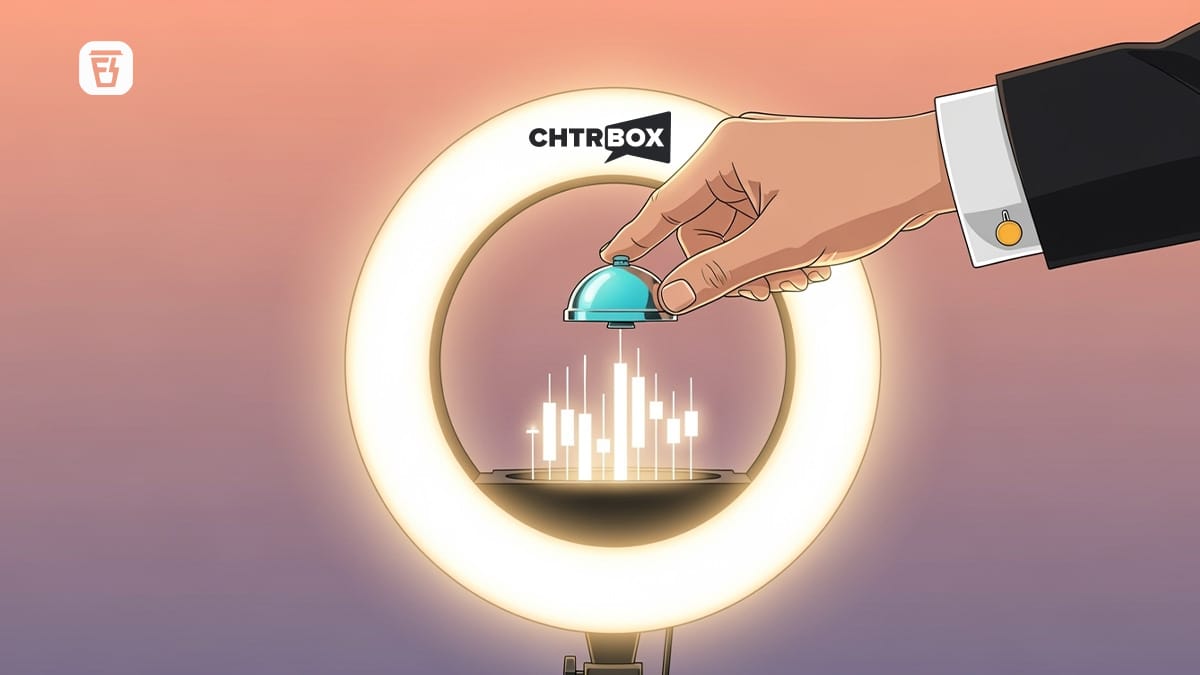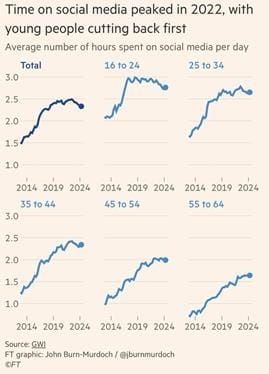An influencer marketing company on the bourses!

In today’s Finshots, we talk about the first ever influencer marketing company that recently got listed on Indian bourses.
But here’s a quick sidenote before we begin. Insurance just got cheaper.
Since the government removed the 18% GST on insurance premiums, life and health policies now cost less. But cheaper does not always mean simpler.
That’s why we’re conducting a 2-day Insurance Masterclass, where we’ll help you understand what to buy, how much cover you need, and how to avoid common mistakes. Only 300 seats remaining. 👉🏽Click here to save your spot.
Now, on to the story...
The Story
A decade ago, if you’d said the business of being an “influencer” would one day make it to the stock market, most people would’ve laughed. But Chatterbox Technologies has changed that. Better known by its brand name Chtrbox, it’s now on Dalal Street, and arguably India’s first pure-play influencer-marketing company to list. It’s proof that content has moved from hobby or pastime to industry.
At its heart, Chatterbox is a matchmaker. It connects brands that want attention with people who already have it. It does this through three arms that work together:
1 - Brand Solutions, which designs and executes influencer campaigns — everything from scripting and scheduling to reporting engagement metrics, and brings about 43% of the revenues.
2 - Represent, which contributes 46% of revenues, and handles talent management, putting creators under exclusive contracts and pitching them for paid collaborations.
3 - Chtrsocial, which is the in-house ad production and social-media-management studio.
In FY25, these lines together brought in roughly ₹59 crore of revenue and ₹8.8 crore of profit after tax, with margins around 15%. For a company founded in 2016 and a sector people still struggle to define, that’s tidy.
But the more interesting story is the industry it represents. So let’s for a moment understand that.
You can think of influencer marketing as a three-tier pipe. At the top are platforms like Instagram and YouTube where attention lives. In the middle are agencies, networks, and platforms like Chatterbox that match brand briefs to creators, price the work, and measure outcomes. At the base are brands that decide whether campaigns moved sales or sentiment and whether to spend again.
And in India, this middle layer is booming. As an EY report states, the influencer-marketing market was worth about ₹900 crores in 2021 and could cross ₹3,375 crores by 2026, or about 30% growth a year. If you’re wondering how, well, traditional advertising is losing its voice. At the same time, nearly half of India’s internet time now goes to social media platforms, and audiences have splintered across languages and niches. The efficient way to reach them is through trusted individuals who, literally and figuratively, speak their dialect.
Strategies have evolved too. Big launches still follow a “waterfall” model, i.e., start with a few celebrity faces to create buzz, flood the next layer with micro-influencers for reach, and then boost the best-performing clips with paid ads. Contrast that with always-on brands in beauty, fashion, and tech that run “micro-mesh” programmes. Here, hundreds of creators with 10k–100k followers post consistent, local-language content. Prices are set by the goal, whether it’s awareness (cost-per-view), conversation (cost-per-engagement), or conversion (cost-per-acquisition/affiliate).
And the compliance layer has matured. The Advertising Standards Council of India (ASCI) now expects clear #ad/#collab disclosures. Health promotions and finfluencers face stricter rules and fairer scrutiny than before. So what once looked like the Wild West of marketing is slowly turning into a regulated space with contracts and lawyers.
And that’s where Chatterbox is riding the wave.
About 50-60% of its campaigns now feature regional creators like ones who review gadgets in Tamil or demonstrate saree drapes in Gujarati. They’re cheaper, more relatable, and deliver 5-7x better return-on-spend than national celebrities.
The client mix mirrors that reality. In FY25, beauty and personal care brands contributed roughly 44% of revenue, tech about 27%, and entertainment around 13%. But there’s seasonality too, as close to 60% of annual revenue lands between October and March, the festive period when ad budgets spike. In short, it runs on India’s spending calendar.
If you zoom out, the same formalisation is happening globally. In the US, IZEA Worldwide (listed on NASDAQ) is a pure play that reports gross billings (money flowing through to creators) and a take rate (the slice it keeps). And the big advertising holding companies now treat creator spend as a measurable channel. They’ve been acquiring influencer agencies and folding them into their media networks. It’s a clear pattern that the “middle layer” between creators and brands is being industrialised.
But hold on. A growing industry and a good business can be two very different things.
And with Chatterbox, there’s a cash-flow catch most people miss. For context, nearly 97% of Chatterbox’s service cost goes straight to creators (which is 63% of total revenues). It’s a pass-through model where the company collects from brands and pays most of it to influencers.
The problem is timing since brands typically pay in 60–90 days, but creators expect to be paid much sooner. And that mismatch ties up cash for Chatterbox.
You can see it in the books. As of FY25, trade receivables were roughly ₹14 crore (up from ₹7 crores in FY23 and about 25% of annual revenue). The company even booked small ‘interest income’ under the MSME Act on delayed client payments, which is a polite way of saying some clients were charged late fees. Add a related-party receivable of around ₹6 crore, and you understand why liquidity matters.
Plus, this is a people business, and many client wins come through senior leadership relationships. For context, the majority promoter is QYOU Media Inc., a Canada-listed content company that still owns roughly half post-issue, alongside promoter management in India. That gives Chatterbox valuable network leverage. But it also puts a spotlight on related-party hygiene as the company grows.
And attrition was high at 41%, which can hurt execution if not managed.
That perhaps answers the question we’ve been pondering since we started writing this story. Why does this company need an IPO? Can’t it just opt for a private equity round?
After all, the IPO is about breathing space. Of the ₹42.8 crore raised, ₹11 crore went to working capital, ₹7 crore to office/studio upgrades, ₹6 crore to working capital requirements, and ₹5 crore to brand building, with the rest for general corporate padding. Put simply, we could see the listing as a way to keep the lights bright without borrowing.
Which makes us ask… How do you even value a company that sells “influence”? After all, traditional profit-based ratios can mislead because most of the spend is a pass-through.
So the more appropriate metrics could be operational. Like Gross Billings (the total campaign value executed) and the take-rate (net revenue ÷ billings). You can also track the mix (campaigns vs. talent retainers vs. studio), because mix drives margin. Keep an eye on client concentration (top-10 share), net revenue retention (repeatability), and the creator-payout ratio (a proxy for how much is pass-through versus value-add).
Globally, influencer businesses tend to trade more like digital agencies — on EV/Revenue or EV/EBITDA rather than frothy P/E multiples — and markets reward steady take-rates and quick cash conversion over headline growth. And maybe in India’s seasonal context, simple filters could work. Like Cash Flow from Operations/PAT (or how much of accounting profit turns into cash) over a rolling year and whether the receivable cycle shortens without upsetting clients.
The bigger question though? Is this industry investment worthy?
It’s tempting to call influencer marketing a fad, but the economics say otherwise. Advertising money follows attention, and attention has already migrated to creators. Trust travels peer-to-peer, and it’s hard to think it’s going away. What can change, however, is how that attention is monetised. Regulators can tighten disclosure rules, platforms can alter algorithms, or new mediums can pop up overnight. In that sense, it’s a structurally rising yet tactically volatile sector.
Look at this chart, for instance. While you might think social media is booming, its usage has reportedly peaked in 2022, especially by youngsters. Oh, and you can’t ignore the AI disruptions that could pop up in the years to come.

So if you’re looking at Chatterbox, you’re essentially betting on the infrastructure of influence rather than the influencers themselves. That lowers individual-creator risk but doesn’t remove platform dependency. It’s also a working-capital-heavy services play, so cash discipline matters more than creativity.
Yet the upside is undeniable, from first-mover scarcity, potential M&A interest from global groups, and a clean way to ride India’s creator economy. And being the first listed name in India gives Chatterbox a ‘scarcity premium’.
If you want a good night’s sleep, there could be many indirect ways to ride this trend like the ad conglomerates, or even the platforms (Alphabet, Meta) where the real monetisation happens.
So yeah, Chatterbox’s challenge from here could be execution. It must scale without diluting relationships, expand beyond beauty, and keep cash cycles short. The opportunity is huge, but so is the fragility. And whether the market rewards the company is another question.
Until then…
If this story helped you understand the influencer marketing space better, why not help your friends, family, or even strangers understand it too by sharing it on WhatsApp, LinkedIn, or X? And ask them to subscribe.
